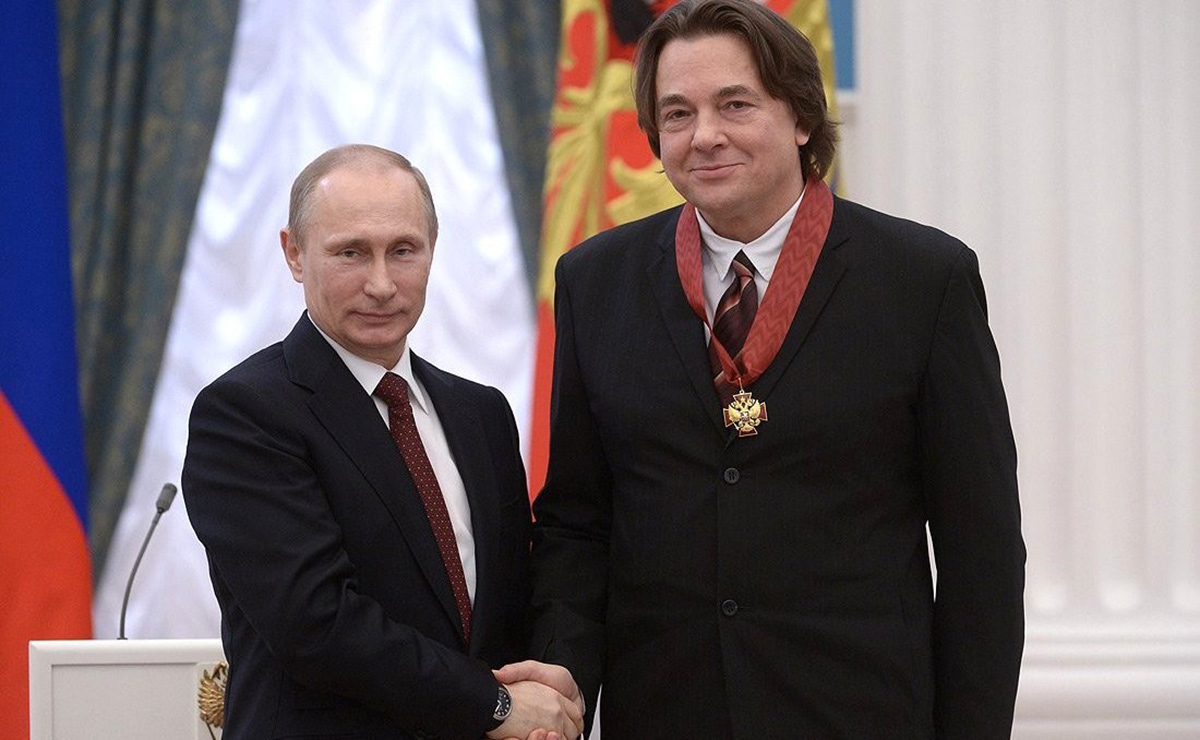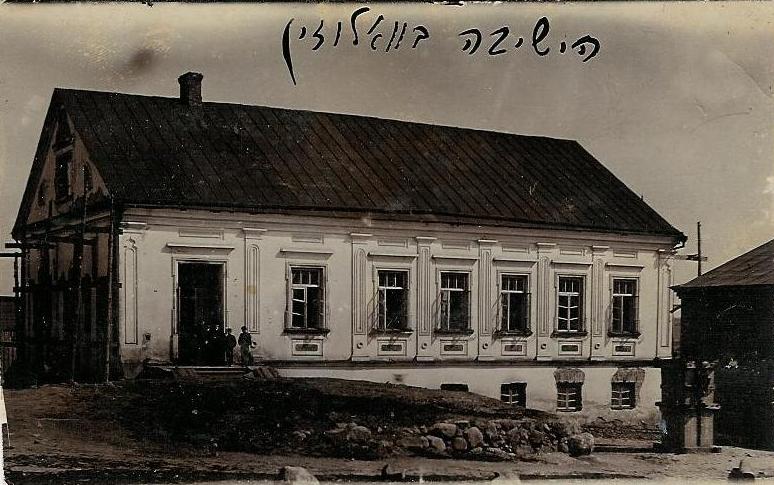|
Arcady Ruderman
Arkady Abramovich Ruderman ( be, Аркадзь Абрамавіч Рудэрман, russian: Арка́дий Абра́мович Рудерман; 7 January 1950 – 22 September 1992) was a Belarusian documentary filmmaker who was killed during the Civil war in Tajikistan in 1992. Biography Arkady Ruderman was born in 1950 in Minsk, capital of the Byelorussian SSR. Ruderman first gained fame in the Soviet Union in 1988 for his reporting on attempts by the communist authorities of BSSR to play down the centennial celebration of the Jewish painter Marc Chagall. Ruderman went on to direct several documentaries about the underside of the Soviet Union. His work won him accolades at the 1988 and 1989 Soviet film festivals. In November 1988 Ruderman was the first Russian TV journalist to interview Alexander Dubček, the former leader of Czechoslovakia who was deposed by Soviet forces after the Prague Spring uprising of 1968. In September 1992 Ruderman traveled to Tajikistan t ... [...More Info...] [...Related Items...] OR: [Wikipedia] [Google] [Baidu] |
Belarus
Belarus,, , ; alternatively and formerly known as Byelorussia (from Russian ). officially the Republic of Belarus,; rus, Республика Беларусь, Respublika Belarus. is a landlocked country in Eastern Europe. It is bordered by Russia to the east and northeast, Ukraine to the south, Poland to the west, and Lithuania and Latvia to the northwest. Covering an area of and with a population of 9.4 million, Belarus is the 13th-largest and the 20th-most populous country in Europe. The country has a hemiboreal climate and is administratively divided into seven regions. Minsk is the capital and largest city. Until the 20th century, different states at various times controlled the lands of modern-day Belarus, including Kievan Rus', the Principality of Polotsk, the Grand Duchy of Lithuania, the Polish–Lithuanian Commonwealth, and the Russian Empire. In the aftermath of the Russian Revolution in 1917, different states arose competing for legitimacy amid the ... [...More Info...] [...Related Items...] OR: [Wikipedia] [Google] [Baidu] |
Channel One (Russia)
Channel One ( rus, Первый канал, r=Pervyy kanal, p=ˈpʲervɨj kɐˈnal, t=First Channel) is a Russian state-controlled television channel. It is the first television channel to broadcast in the Russian Federation. Its headquarters are located at Ostankino Technical Center near the Ostankino Tower in Moscow. From April 1995 to September 2002, the channel was known as Public Russian Television ( rus, Общественное Российское Телевидение, r=Obshchestvennoye Rossiyskoye Televideniye, ORT ). History When the Soviet Union was abolished, the Russian Federation took over most of its structures and institutions. One of the first acts of Boris Yeltsin's new government was to sign a presidential decree on 27 December 1991, providing for Russian jurisdiction over the central television system. The 'All-Union State TV and Radio Company' ( Gosteleradio) was transformed into the 'Russian State TV and Radio Company Ostankino'. A presidential ... [...More Info...] [...Related Items...] OR: [Wikipedia] [Google] [Baidu] |
Journalists From Minsk
A journalist is an individual that collects/gathers information in form of text, audio, or pictures, processes them into a news-worthy form, and disseminates it to the public. The act or process mainly done by the journalist is called journalism. Roles Journalists can be broadcast, print, advertising, and public relations personnel, and, depending on the form of journalism, the term ''journalist'' may also include various categories of individuals as per the roles they play in the process. This includes reporters, correspondents, citizen journalists, editors, editorial-writers, columnists, and visual journalists, such as photojournalists (journalists who use the medium of photography). A reporter is a type of journalist who researches, writes and reports on information in order to present using sources. This may entail conducting interviews, information-gathering and/or writing articles. Reporters may split their time between working in a newsroom, or from home, and going ou ... [...More Info...] [...Related Items...] OR: [Wikipedia] [Google] [Baidu] |
Belarusian Jews
The history of the Jews in Belarus begins as early as the 8th century. Jews lived in all parts of the lands of modern Belarus. Jews were the third largest ethnic group in the country in the first half of the 20th century. In 1897, the Jewish population of Belarus reached 910,900, or 14.2% of the total population. Following the Polish-Soviet War (1919-1920), under the terms of the Treaty of Riga, Belarus was split into Eastern Belorussia (under Soviet occupation) and Western Belorussia (under Polish occupation), and causing 350,000-450,000 of the Jews to be governed by Poland. Prior to World War II, Jews remained the third largest ethnic group in Belarus and comprised more than 40% of the population in cities and towns. The population of cities such as Minsk, Pinsk, Mahiliou, Babrujsk, Viciebsk, and Homiel was more than 50% Jewish. In 1926 and 1939 there were between 375,000 and 407,000 Jews in Belarus (Eastern Belorussia) or 6.7-8.2% of the total population. Following the ... [...More Info...] [...Related Items...] OR: [Wikipedia] [Google] [Baidu] |
Film People From Minsk
A film also called a movie, motion picture, moving picture, picture, photoplay or (slang) flick is a work of visual art that simulates experiences and otherwise communicates ideas, stories, perceptions, feelings, beauty, or atmosphere through the use of moving images. These images are generally accompanied by sound and, more rarely, other sensory stimulations. The word "cinema", short for cinematography, is often used to refer to filmmaking and the film industry, and to the art form that is the result of it. Recording and transmission of film The moving images of a film are created by photography, photographing actual scenes with a movie camera, motion-picture camera, by photographing drawings or miniature models using traditional animation techniques, by means of computer-generated imagery, CGI and computer animation, or by a combination of some or all of these techniques, and other visual effects. Before the introduction of digital production, series of still imag ... [...More Info...] [...Related Items...] OR: [Wikipedia] [Google] [Baidu] |
1992 Deaths
Year 199 ( CXCIX) was a common year starting on Monday (link will display the full calendar) of the Julian calendar. At the time, it was sometimes known as year 952 '' Ab urbe condita''. The denomination 199 for this year has been used since the early medieval period, when the Anno Domini calendar era became the prevalent method in Europe for naming years. Events By place Roman Empire * Mesopotamia is partitioned into two Roman provinces divided by the Euphrates, Mesopotamia and Osroene. * Emperor Septimius Severus lays siege to the city-state Hatra in Central-Mesopotamia, but fails to capture the city despite breaching the walls. * Two new legions, I Parthica and III Parthica, are formed as a permanent garrison. China * Battle of Yijing: Chinese warlord Yuan Shao defeats Gongsun Zan. Korea * Geodeung succeeds Suro of Geumgwan Gaya, as king of the Korean kingdom of Gaya (traditional date). By topic Religion * Pope Zephyrinus succeeds Pope Victor ... [...More Info...] [...Related Items...] OR: [Wikipedia] [Google] [Baidu] |
1950 Births
Year 195 ( CXCV) was a common year starting on Wednesday (link will display the full calendar) of the Julian calendar The Julian calendar, proposed by Roman consul Julius Caesar in 46 BC, was a reform of the Roman calendar. It took effect on , by edict. It was designed with the aid of Greek mathematicians and astronomers such as Sosigenes of Alexandr .... At the time, it was known as the Year of the Consulship of Scrapula and Clemens (or, less frequently, year 948 '' Ab urbe condita''). The denomination 195 for this year has been used since the early medieval period, when the Anno Domini calendar era became the prevalent method in Europe for naming years. Events By place Roman Empire * Emperor Septimius Severus has the Roman Senate deify the previous emperor Commodus, in an attempt to gain favor with the family of Marcus Aurelius. * King Vologases V and other eastern princes support the claims of Pescennius Niger. The Roman province of Mesopotamia ... [...More Info...] [...Related Items...] OR: [Wikipedia] [Google] [Baidu] |
List Of Journalists Killed In Tajikistan
This is a list of journalism, journalists who have been killed in Tajikistan or journalists from Tajikistan killed outside of the country since 1990. Listees include those known to have been homicide, murdered, as well as cases of suspicious deaths. History From 1990-2001 Tajikistan was one of the most dangerous countries in the world for journalists. Estimates for the number of journalists killed number from fifty to eighty. In the late 1980s and early 1990s, journalism in Tajikistan underwent a transformation as the Soviet Union liberalized under glasnost and perestroika. Journalists in both private and state-run media were permitted greater editorial and investigative freedoms to report on issues and to challenge government propaganda. But journalists ran into danger when they publicly confronted powerful interests or reported on violent events. The first journalistic death in Tajikistan occurred on 12 February 1990 when a sniper in a government building opened fire on demonstrat ... [...More Info...] [...Related Items...] OR: [Wikipedia] [Google] [Baidu] |
Yury Khashchevatsky
Yury, Yuri, Youri, Yurii, Yuriy, Yurij, Iurii or Iouri is the Slavic (russian: Юрий, Yuriy, or uk, Юрій, Yuriy, or bg, Юрий, Jurij, or be, Юры, Jury) form of the masculine given name George; it is derived directly from the Greek form Georgios and related to Polish Jerzy, Czech Jiří, and Slovak and Croatian Juraj, akin to Spanish and Portuguese Jorge, and German Jürgen, and assimilated in modern forms such as German and Italian Juri, Portuguese Iury, and Dutch Joeri. The Slavic form of the name originates with Yuri Dolgoruky, Grand Prince of Kiev (c. 1099–1157), in early accounts recorded as ''Gyurgi, Dyurgi''. Yaroslav the Wise, great-grandfather of Yuriy Dolgorukiy, was the first Ruthenian ruler whose patron saint was Saint George. The saint is now depicted on the coat of arms of Moscow. Ancient and medieval world (Listed chronologically) * Yuri Dolgorukiy or Yuri I Vladimirovich (c. 1099–1157), Grand Prince of Kiev * Yuri II of Vladimir (1189–1 ... [...More Info...] [...Related Items...] OR: [Wikipedia] [Google] [Baidu] |
Center For Journalism In Extreme Situations
The Center for Journalism in Extreme Situations (russian: Центр экстремальной журналистики) is a press advocacy group in Russia. Founded in 2000 as part of the Russian Union of Journalists, the center is the primary media watchdog in the country and produces a variety of publications, including the weekly bulletin of media news and commentary Dangerous Profession. The Center's director, Oleg Panfilov, warned against a proposition in Russia to arm journalists following the January 2009 murder of Novaya Gazeta reporter Anastasia Baburova and human rights attorney Stanislav Markelov. |
Dushanbe
Dushanbe ( tg, Душанбе, ; ; russian: Душанбе) is the capital and largest city of Tajikistan. , Dushanbe had a population of 863,400 and that population was largely Tajik. Until 1929, the city was known in Russian as Dyushambe (russian: Дюшамбе, ''Dyushambe''), and from 1929 to 1961 as Stalinabad ( tg, Сталинобод, Stalinobod), after Joseph Stalin. Dushanbe is located in the Gissar Valley, bounded by the Gissar Range in the north and east and the Babatag, Aktau, Rangontau and Karatau mountains in the south, and has an elevation of 750–930 m. The city is divided into four districts, all named after historical figures: Ismail Samani, Avicenna, Ferdowsi, and Shah Mansur. In ancient times, what is now or is close to modern Dushanbe was settled by various empires and peoples, including Mousterian tool-users, various neolithic cultures, the Achaemenid Empire, Greco-Bactria, the Kushan Empire, and the Hephthalites. In the Middle Ages, more s ... [...More Info...] [...Related Items...] OR: [Wikipedia] [Google] [Baidu] |

.jpg)


.jpg)